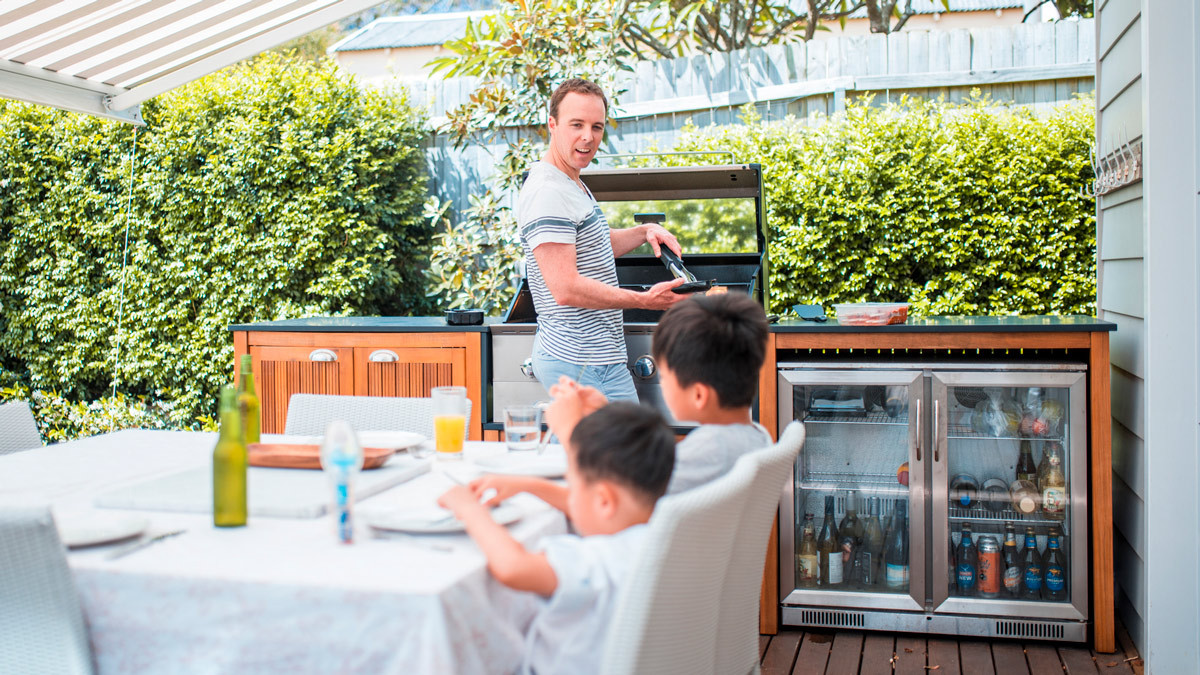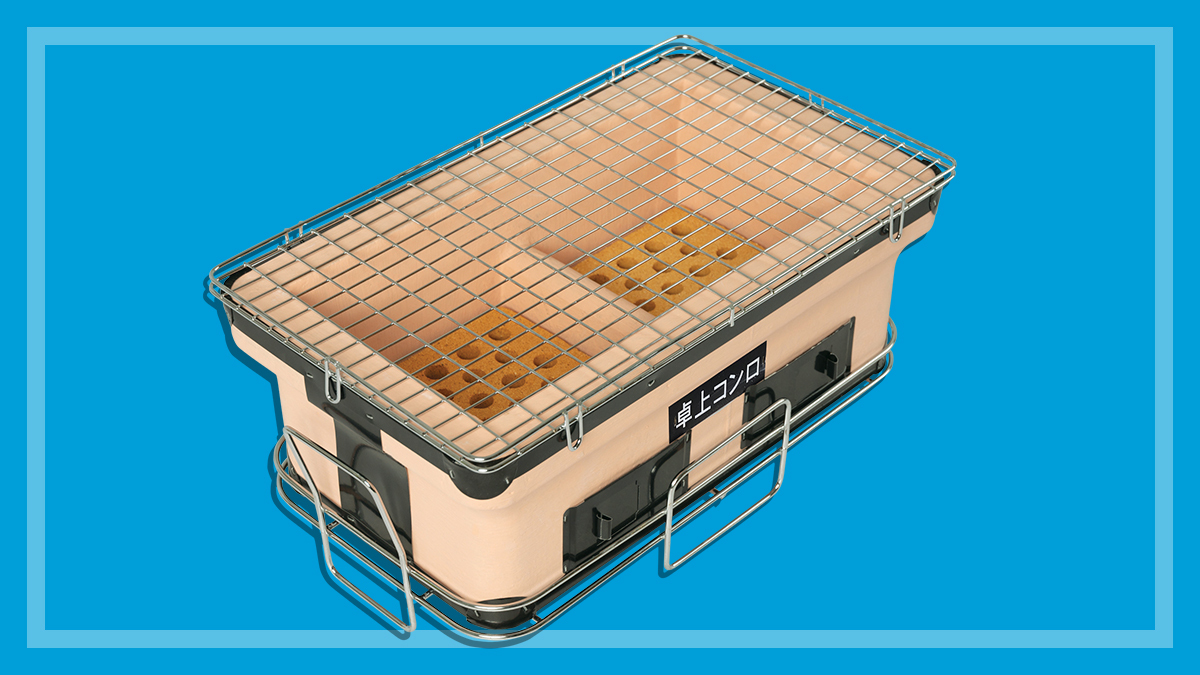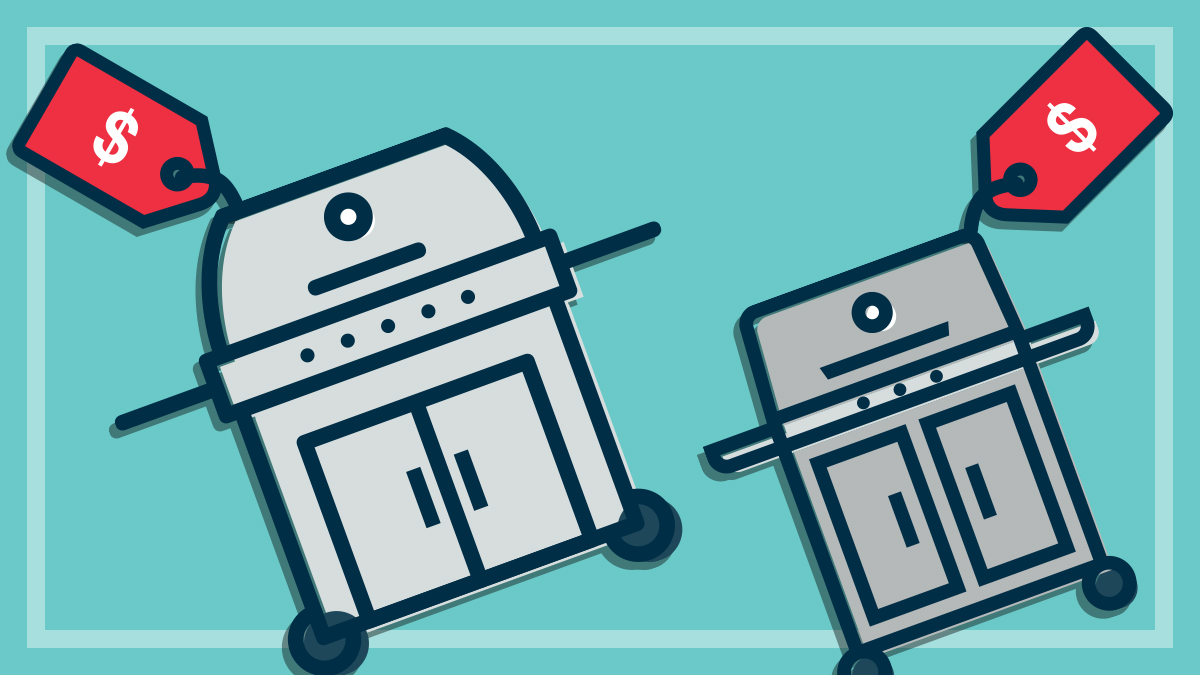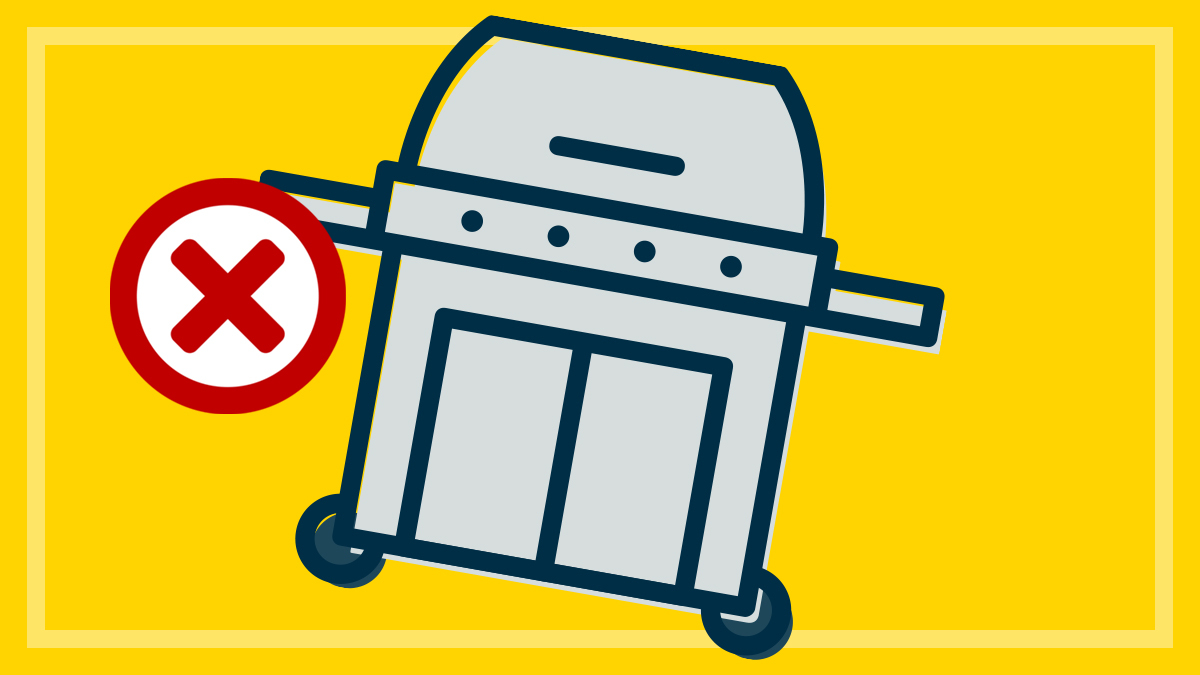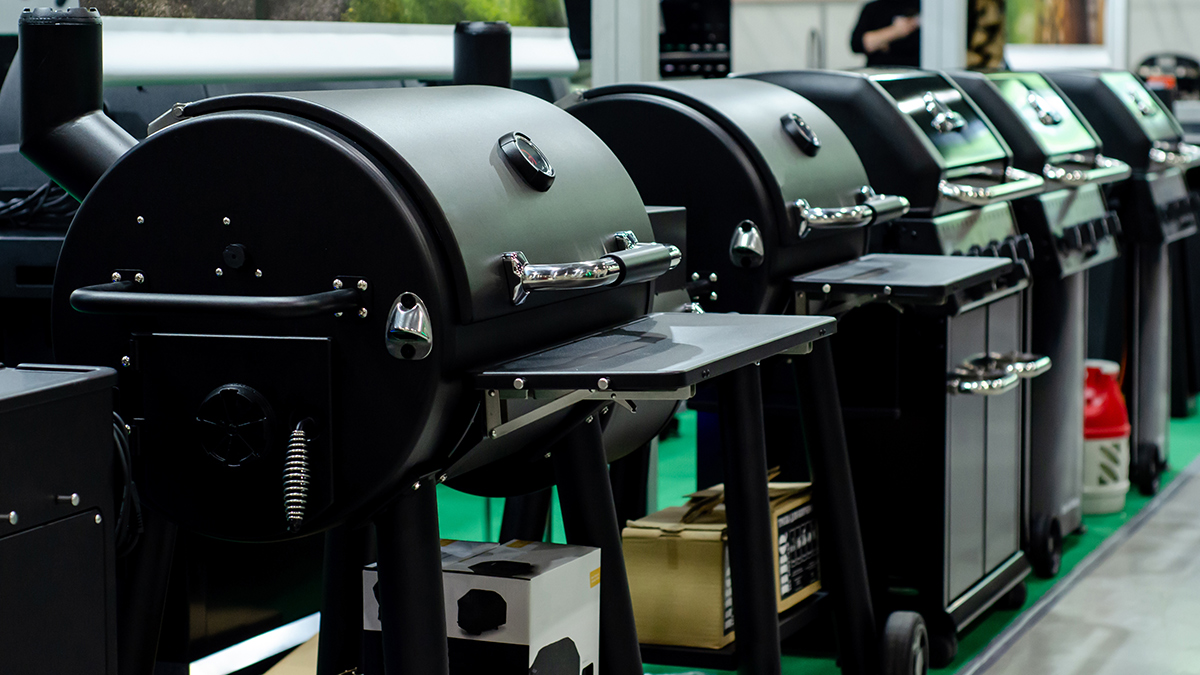Get our independent lab tests, expert reviews and honest advice.
Keep your barbecue safe
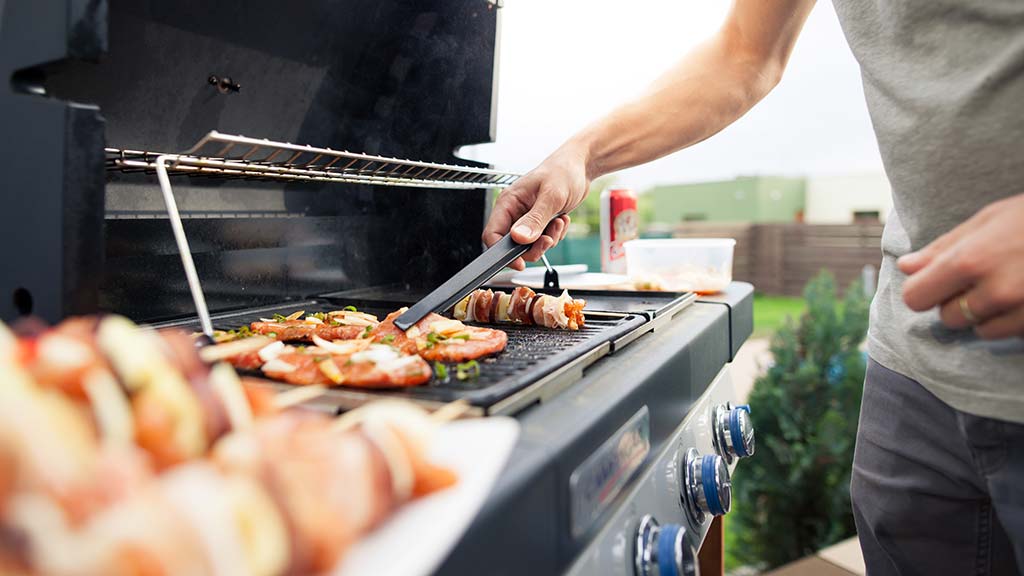
Who doesn’t love a summer barbecue? Trouble is, if the barbie hasn’t been used for a while, it might not be in best shape to deliver a sizzling steak when you want it – and it might even be dangerous.
Fire and Rescue NSW (FRNSW) issued a warning in October 2016 following nine LPG (liquified petroleum gas) explosions involving barbecues, some of which caused “serious injury and extensive property damage”.
FRNSW commissioner Greg Mullins said that was an alarming number of incidents and warned people not to be complacent when firing up their barbecue.
Don’t risk burning more than the sausages; check out our tips for keeping the barbecue in safe working order.
Barbecue explodes in backyard
Footage courtesy of NINE News.
Maintaining your BBQ
- Replace cylinders (gas bottles) if they appear damaged or rusty. Check them for leaks by spraying or brushing a soapy water solution onto them – bubbles will form if gas is escaping. You can also check hose ends and regulator connections this way. It’s important to check the whole barbecue/cylinder set-up, not just the cylinder itself.
- Check hoses to make sure they haven’t perished. Replace hoses every five years.
- Check connections to make sure they’re clean and fit snugly.
- Cylinders can’t be refilled if they haven’t been tested in the past 10 years, or if they’re damaged. You can tell how old your cylinder is by looking at the date stamped on the collar. Gas cylinder testing services can be found by searching online or in the Yellow Pages. Testing costs about $30–$40 and includes valve replacement. Or you might want to just take it to a cylinder swapping centre and get a new one – see below.
Cylinder dos and don’ts
- Don’t store cylinders indoors – including the garage, shed or under the house. Keep them outdoors so any gas leak will vent safely.
- Always keep LPG cylinders upright – they shouldn’t be laid on their side.
- When transporting a cylinder, make sure it’s well secured so it can’t roll around. Wedge it into the back of your vehicle so it can’t move, or tie it up with a strap. For long trips, or when moving house, ideally the cylinder should be empty. Note that for safety reasons removalists won’t transport a gas cylinder, whether it is empty or not.
- Don’t leave cylinders in the car.
Barbecue dos and don’ts
- Never use a barbecue with the wrong kind of gas. The data plate on the side of the barbecue should state the correct type of gas to use with your model (LPG or natural gas).
- Don’t barbecue in a confined space or indoors – the fumes can be toxic and you could start a fire.
- Make sure there’s plenty of clearance around your barbecue to avoid it becoming a fire risk.
- After using your barbecue, remove all excess fat so it doesn’t end up a fire hazard.
- Don’t use gas barbecues when it’s really windy, as the burners might blow out, causing a serious gas leak or an explosive ignition.
Refilling your gas cylinder
You can have a gas bottle refilled at some service stations and other outlets, but the common approach now is to use a gas cylinder exchange system. These are a good idea because safety checks are done at each refill and the refilling process is generally safer, done by trained staff under controlled conditions.
It’s pretty simple; you take your empty cylinder to the shop or petrol station, leave it with them and take a full one in exchange. When it’s empty, you can either keep it and refill it yourself, or swap it again. Usually the schemes supply only the common large and small bottle sizes (8.5kg and 3.7kg, formerly known as 9kg and 4kg).
The empty bottles are collected from outlets and the company conducts safety checks, cleans them (and, if necessary, paints them), refills them and sends them out again. Old cylinders undergo the standard 10-year re-certification test, with a visual inspection for damage inside and outside, and the valve is replaced. Rusty or damaged cylinders are recycled as scrap metal.
Swapping schemes include Swap’n’Go, Kwikgas and Quick Swap. They operate out of service stations, convenience stores, hardware stores and so on. If you don’t already own a cylinder you can buy one at the outlet; if you have one but it hasn’t been tested and stamped in 10 years, you will probably be able to simply swap it for a new one, though a fee might apply.
It costs about $30–$60 to buy a new, filled 8.5kg cylinder (a bit less for a smaller bottle such as a 3.7kg). To replace an empty 8.5kg cylinder with a filled one will cost about $20–$25 (again, less for a smaller cylinder).
Cylinder swapping systems are tending to replace the old fill-it-yourself outlet, though those can still be found. Swapping can be more expensive than owning and refilling your own gas cylinder, but again, it’s much safer, which is a major bonus.
How to dispose of a gas BBQ cylinder
The easiest option for most people is to take their old gas cylinder to a bottle swapping outlet, where the old cylinder will be accepted and disposed of for you. But that usually only applies for the common 8.5kg and 3.7kg sizes.
There are other sizes of gas bottles that don’t fit into those swapping schemes. These can be a danger as there aren’t necessarily any convenient recycling options available for consumers to use. However, most major council recycling or waste centres will accept old gas cylinders. Scrap metal centres may also take them.
Gas bottles for barbecues, camping stoves, lamps and heaters can end up being stored and forgotten, ending up in our normal recycling and creating a major hazard for Australian recycling companies. Explosions may occur when these gas cylinders slip through the safety precautions, endangering workers.
If you don’t know where to take your old gas cylinders, search online for “gas cylinder disposal” or call your local council.


